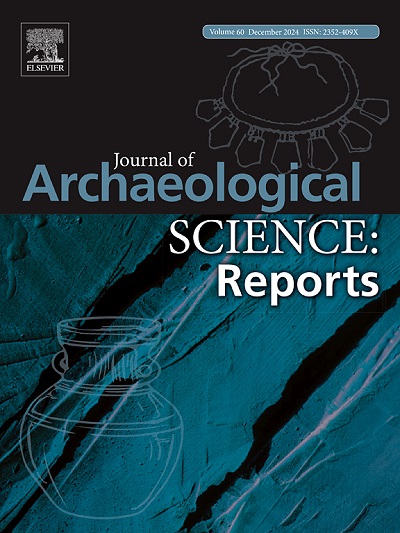A multidisciplinary investigation into whether Andean caravans reached the southern lowlands of the Paraná-Plata basin during pre-Columbian times
IF 1.5
2区 历史学
0 ARCHAEOLOGY
引用次数: 0
Abstract
The expansion of llama caravans and the dispersal of domesticated camelids to extra-Andean regions is one of the key topics in South American archaeology. One of the main indicators of both processes is the presence of domesticated camelids in the archaeological record, particularly the llama (Lama glama). Based primarily on historical sources subject to interpretation, it has been suggested that llama caravans may have reached the southeast of South America during Pre-Columbian times, particularly to the northern Pampean region and the Paraná River valley. While the archaeological assemblages in these two areas include camelid bones that have thus far been identified as guanaco (Lama guanicoe), the possibility of misidentification due to the osteometric similarity between the latter and L. glama could mask the presence of domestic camelids in the record, undermining evidence of this potential major expansion of Andean caravans and domestic camelids. To clarify this issue, we applied a multidisciplinary approach combining archaeological, isotopic, and paleogenomic analyses to determine the taxonomic status of camelids recovered from archaeological sites in northern Pampean region and the valley of the Paraná River. Our findings demonstrate that all the individuals analyzed correspond to guanacos, whose survival extended into early historical times. Additionally, the archaeological record from both areas contemporaneous with the maximum pre-Columbian expansion of the Andean caravans, provides no evidence of direct trade with the Andean world.
一项多学科调查,探讨安第斯商队是否在前哥伦布时代到达Paraná-Plata盆地的南部低地
骆驼商队的扩张和驯化骆驼向安第斯山脉外地区的扩散是南美考古学的关键课题之一。这两个过程的主要标志之一是考古记录中驯化骆驼的存在,特别是美洲驼(Lama glama)。主要基于历史资料的解释,有人认为骆驼商队可能在前哥伦布时代到达南美洲东南部,特别是北部潘潘亚地区和帕拉纳河谷。虽然这两个地区的考古组合包括迄今为止已被确定为guanaco (Lama guanicoe)的骆驼骨骼,但由于后者与L. glama之间的骨测量相似性而导致错误识别的可能性可能掩盖了记录中驯养骆驼的存在,从而破坏了安第斯商队和驯养骆驼潜在大规模扩张的证据。为了澄清这一问题,我们采用多学科方法,结合考古学、同位素和古基因组学分析,确定了在潘潘北部地区和帕拉那河流域考古遗址中发现的骆驼科动物的分类地位。我们的研究结果表明,所有分析的个体都与瓜纳科斯相对应,它们的生存延伸到了早期历史时期。此外,这两个地区的考古记录与安第斯商队在哥伦布发现新大陆前的最大扩张时期同时,没有提供与安第斯世界直接贸易的证据。
本文章由计算机程序翻译,如有差异,请以英文原文为准。
求助全文
约1分钟内获得全文
求助全文
来源期刊

Journal of Archaeological Science-Reports
ARCHAEOLOGY-
CiteScore
3.10
自引率
12.50%
发文量
405
期刊介绍:
Journal of Archaeological Science: Reports is aimed at archaeologists and scientists engaged with the application of scientific techniques and methodologies to all areas of archaeology. The journal focuses on the results of the application of scientific methods to archaeological problems and debates. It will provide a forum for reviews and scientific debate of issues in scientific archaeology and their impact in the wider subject. Journal of Archaeological Science: Reports will publish papers of excellent archaeological science, with regional or wider interest. This will include case studies, reviews and short papers where an established scientific technique sheds light on archaeological questions and debates.
 求助内容:
求助内容: 应助结果提醒方式:
应助结果提醒方式:


